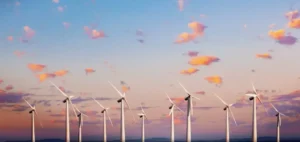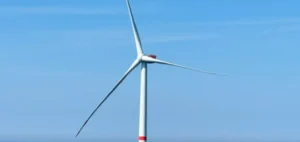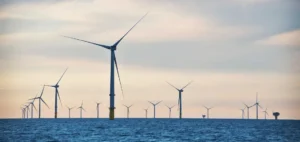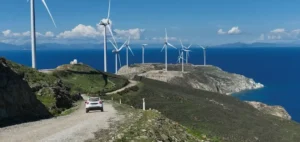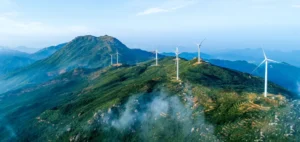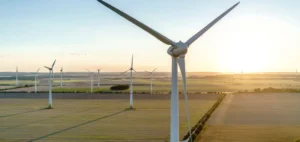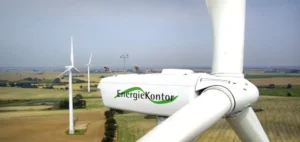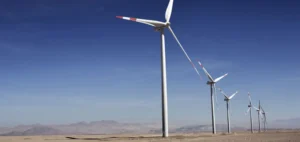The think tank Ember warns about the United States’ lag in the wind energy sector. According to its latest analysis, the gap with major global economies, particularly Europe and China, continues to widen. In 2023, the United States generated 10% of its electricity from wind, a proportion slightly above the global average of 7.8%. However, compared to the performance of other regions, this figure remains insufficient.
The European Union, for example, reached a 17% share of electricity from wind in 2024. Countries like Denmark, Ireland, and Portugal far exceed this, with respective shares of 58%, 36%, and 31%. These results illustrate Europe’s massive commitment to this energy transition, especially in the offshore and onshore wind sectors. The United Kingdom has also made significant investments in wind energy, raising its share to 29% of its electricity production in 2023.
In contrast, China, while still behind the United States for now, with 9% of its electricity coming from wind, is accelerating its development in this sector. Beijing is expected to surpass Washington in the coming years, according to Ember. Another interesting point of comparison is developing countries like Uruguay, Kenya, and Brazil, which report shares of 36%, 16%, and 13%, respectively, well above the United States.
A key factor behind this American delay lies in the political choices of the Trump administration. Upon taking office, the former president signed a decree limiting new wind energy projects and opposed any form of subsidies for this sector. This policy hindered the growth of wind energy in the United States, despite technological advances and increasing investments in other countries.
Wind energy is, however, an increasingly competitive energy solution. The International Energy Agency (IEA) has repeatedly emphasized that wind energy is now one of the most cost-effective sources of electricity generation, particularly in coastal areas and windy regions. Additionally, declining installation costs and constant innovations are making this energy source more accessible worldwide.
If the United States fails to intensify its wind energy production, the country risks losing a significant portion of its influence in the renewable energy sector. The global wind market is growing rapidly, with forecasts predicting a doubling of installed capacity in the next ten years. This evolution presents significant opportunities for industry leaders, but also risks for those who remain behind.
American economic players will thus need to step up their efforts to catch up, or they risk seeing giants like China emerge as the new global leaders in wind energy production.
The United States in Competition with China
The United States is not alone in facing China’s growing power. The Asian country is investing heavily in renewable energy, particularly wind, to reduce its reliance on fossil fuels. China is already the world’s largest producer of wind turbines and is expected to continue expanding its installed capacity in the coming years. The Middle Kingdom plans to achieve a 20% share of wind electricity by the end of the decade.
Meanwhile, China’s energy development policy highlights a major strategic issue: the transition to renewable energy. While Asia is ahead of many countries in integrating renewable energy, the United States risks finding itself in a difficult position as global demand for wind and other renewable energies grows.
The United States Facing a Global Trend
The United States’ delay in wind energy seems paradoxical given the country’s vast natural resources and untapped wind potential. However, a series of political, economic, and industrial factors have contributed to this situation. Although recent initiatives in certain states show a renewed interest in wind energy, the federal framework lacks decisive support to drive large-scale development.
In comparison, countries like Saudi Arabia, another major oil exporter, and Indonesia, the leading coal exporter, are also venturing into renewable energy, including wind. This transition is a key part of their long-term energy strategy, aiming to diversify their energy mix and prepare for future environmental and economic challenges.


